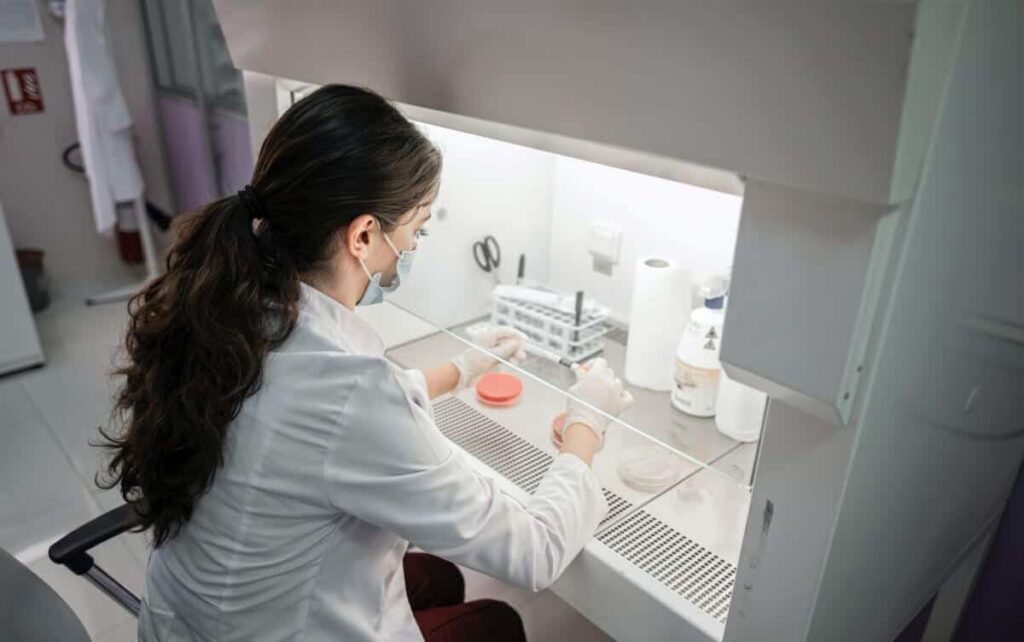One of the key challenges facing researchers working on treatments for rare diseases is recruitment for clinical trials. Because these diseases are relatively uncommon, it can be difficult to find enough patients to participate in studies and help advance treatment options. Additionally, there is often a lack of awareness for the condition, making it difficult to promote the trial.
In recent years, recruitment for rare disease trials has become even more challenging due to increased competition in the clinical research industry. As a result, there is a need for trials to maximise the potential of rare disease patient recruitment with considered, tailored approaches. This is a key consideration in the clinical trial project management process.
There are a number of approaches that researchers can use to overcome this challenge, including leveraging online patient communities, partnering with advocacy groups, developing tailored communication strategies and utilising social media platforms. We take a closer look at these in this article.
Challenges in rare disease clinical research
There are several common challenges that can make rare disease patient recruitment difficult. Some of the main challenges include:
- By the nature of rare diseases, there are few patients available for recruitment.
- Patient populations are likely to be geographically dispersed.
- Rare disease patients are, unfortunately, often very sick due to a lack of treatment options. Medical complications can prevent patients from meeting recruitment criteria, or could mean they are too sick to participate.
- The majority of rare disease patients are paediatric. This can mean there is less flexibility with site visits, as the patient can’t travel themselves.
- Patients may have doubts about the safety or reliability of clinical trials, particularly in cases of rare disease, where there is often little existing knowledge or awareness of the condition.
- Rare disease trials can lack predefined endpoints due to the lack of awareness of the condition, which can make it challenging for patients to understand the full scope of the trial.
For more details, explore our article that discusses the main challenges and opportunities in rare disease clinical trials.
Approaches to patient recruitment in rare disease clinical trials
Whilst there is no one-size-fits-all approach to patient recruitment in rare disease research, there are a number of ways that researchers can improve recruitment strategies in order to maximise its effectiveness.
Designing studies with a patient-centric approach
One study by Global Genes found that, on average, patients with a rare disease must wait over 4 years from symptom onset to receive an accurate diagnosis. This can have a serious negative impact on a patient’s condition, delaying treatment and potentially worsening their symptoms.
Not only can this journey to diagnosis impact their condition, it can also be a tiring and frustrating process for the patient and their loved ones.
Patient recruitment strategies for rare disease trials need to take this journey into account, and consider how best to communicate with patients and their families throughout the process. This can include strategies like providing clear and comprehensive information about the study, including its purpose, goals, procedures, risks, and potential benefits. Communication should be ongoing throughout the trial, so that patients can provide relevant feedback on their experiences along the way.
This may mean incorporating accommodations such as language interpretation services or transportation assistance to help make it easier for patients to participate; thus, encouraging better patient recruitment.
Ultimately, by focusing on the needs of patients and their families when designing rare disease clinical trials, we can ensure that these studies are truly patient-centric and have a positive impact on people living with rare diseases.
Developing partnerships with patient advocacy groups
One approach that has been shown to be effective is partnering with patient advocacy groups. These groups typically have large networks of people affected by rare diseases, as well as extensive knowledge about their specific conditions. By partnering with these groups and leveraging their networks, researchers can more easily reach potential participants and increase the likelihood of enrolling a sufficient number of patients.
Examples of patient advocacy groups include:
- Beacon for Rare Diseases
- EveryLife Foundation
- Global Genes
- Lysosomal Disease Network
- National Organization for Rare Disorders (NORD)
- Rare Diseases Resources
Another key advantage of partnering with patient advocacy groups is that they have extensive knowledge about the particular challenges and issues faced by individuals living with a rare disease. This knowledge can be invaluable for guiding the development of effective treatments and therapies for these patients, and also developing tailored recruitment strategies
At the same time, partnering with patient advocacy groups can also strengthen the validity and credibility of a clinical trial by demonstrating a commitment to engaging patients in all aspects of research. This helps build trust among patients who may be sceptical or wary about participating in clinical trials.
Utilising rare disease patient registries
Rare disease patient registries are useful databases that can be used to improve patient recruitment for clinical trials. These registries provide a centralised resource where information about rare disease patients can be collected and stored. This allows researchers to access valuable data that can inform their clinical trial recruitment efforts.
One key benefit of using rare disease patient registries for clinical trial recruitment is the ability to identify potential study participants quickly and efficiently. By accessing information about patients with specific disease phenotypes, researchers can pinpoint individuals that may be a good match for their trials based on factors like age, gender, location, and other relevant characteristics. This allows them to effectively target their outreach efforts and increase the likelihood of enrolling participants in their studies.
In addition to facilitating more efficient patient identification, rare disease patient registries can also help researchers develop effective communication strategies for recruiting study participants. By monitoring how people engage with the registry over time, researchers may gain insight into what motivates individuals to join clinical trials or opt-out of participating. This knowledge can then be used to create messaging that resonates with potential study participants and increases the likelihood of recruitment success.
Making the study accessible for patients
One important consideration when conducting research on rare diseases is making it as easy as possible for patients to participate in the study. This can involve offering a variety of different resources and support mechanisms that are tailored to the specific needs of each patient.
Some potential strategies for making participation easier may include providing information about the study via various forms of media, such as websites, social media, information booklets, and email newsletters. In addition, it may be helpful to offer support services such as phone consultations or in-person meetings with researchers in order to help patients feel more comfortable and confident throughout the process.
- Keeping study visits to a minimum and limiting their duration
- Ensuring a limit on the number of assessments
- Providing home-based health evaluations that do not require the patient to travel to the research site. For example, home visits could be carried out to test for vital signs.
- Assisting patients and their families in coordinating travel and accommodation.
- Reducing or completely expensing upfront costs for participants and families.
- Improving patient engagement with effective communication and patient-centric clinical trial management and design.
Another important consideration is ensuring that participants have access to appropriate care and treatment for their condition during the course of the study. This may also involve working closely with healthcare providers or patient advocacy groups to provide patients with guidance on managing their symptoms and any other associated health complications.
Overall, ensuring patient participation in rare disease studies requires a thorough understanding of the unique needs and concerns of these individuals, along with a commitment to providing them with the support they need in order to successfully complete these research efforts.
Using social media for rare disease patient recruitment
Due to the rarity of many rare diseases, it can be difficult for researchers to find patients who are eligible to take part in clinical trials. Social media can help connect investigators with potential patients and their families who may not be aware of clinical trials that are happening.
Organisations may either create posts that promote their research or interact with others in relevant online posts and forums.
Additionally, social media can be used to keep patients and their families updated on the progress of the clinical trial. This can help build trust between the doctor and the patient, and also helps keep patients motivated to continue participating in the trial.
Conclusion
Ultimately, there is no one-size-fits-all approach when it comes to recruiting patients for rare disease trials. Instead, researchers must carefully assess the needs and preferences of the individuals they hope to engage in order to identify the most effective strategies for reaching them and increasing participation rates.
With the right approaches, researchers can maximise the success of rare disease patient recruitment and ultimately provide a better experience for participants.
Full-service CRO support
Simbec-Orion takes an agile and flexible approach to clinical trial management. With therapeutic expertise in rare diseases, we understand the patient journey – delivering tailored clinical trial designs that centre around the patients’ needs.Get in touch with our experts to find out more, or explore our CRO services.





